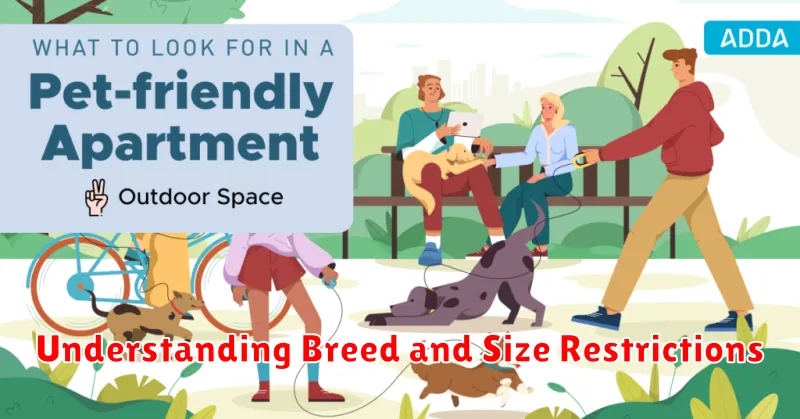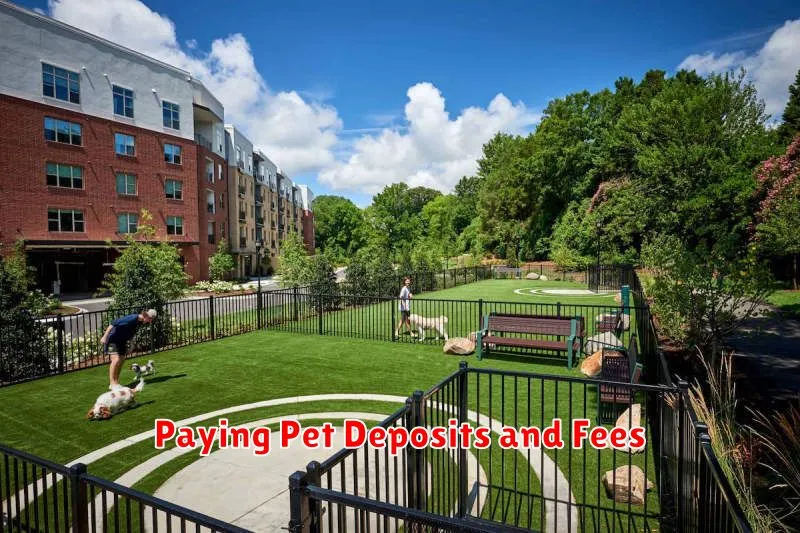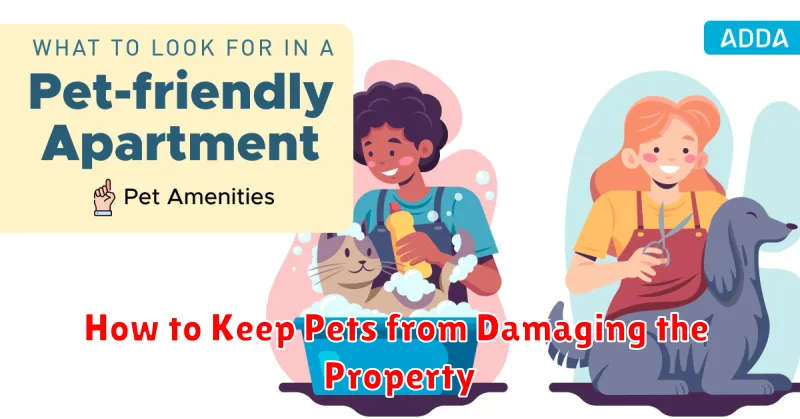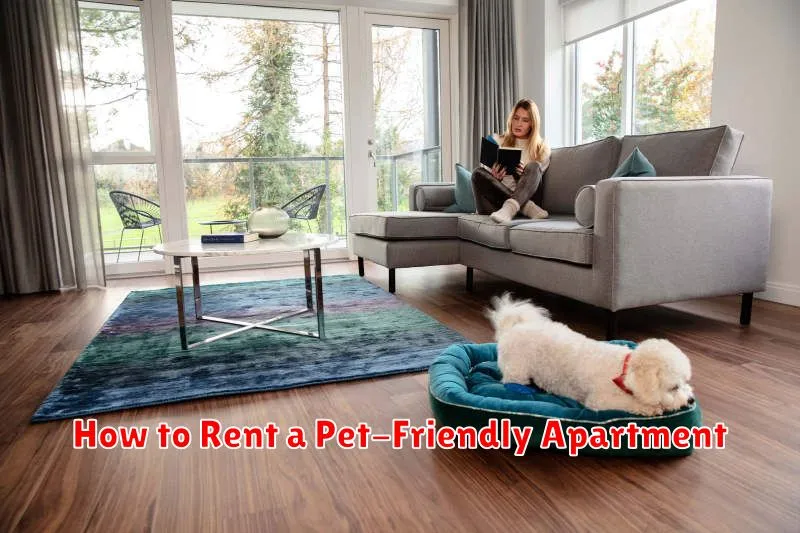Finding the perfect pet-friendly apartment can be a challenge, but with the right approach, you and your furry friend can settle into a comfortable new home. This guide provides valuable insights into the process of renting with pets, covering essential aspects from initial searches to lease signing. Whether you’re looking for a dog-friendly apartment or a cat-friendly apartment, understanding the specific requirements and being prepared will significantly increase your chances of success.
From researching pet policies and preparing a pet resume to understanding pet deposits and pet rent, we’ll cover the key factors involved in securing a pet-friendly rental. Learn how to effectively communicate with potential landlords, present your pet in the best light, and navigate the complexities of pet-friendly apartment hunting. This comprehensive guide will empower you to find the ideal apartment for you and your pet.
Why Pet-Friendly Apartments Can Be Hard to Find
Finding a pet-friendly apartment can often be a challenging endeavor. Property damage is a primary concern for landlords. Pets, even well-behaved ones, can sometimes cause unintended damage like scratches to floors, stains on carpets, or chewed woodwork. Repairing this damage can be costly, and some landlords prefer to avoid the risk altogether. Additionally, some buildings have allergy concerns to consider. Pet dander can linger in common areas, affecting residents with allergies. Finally, noise complaints are another factor. Barking dogs or other pet-related noises can disrupt the peace and quiet of other tenants, leading to potential conflicts and legal issues.
Furthermore, increased insurance costs can contribute to the scarcity of pet-friendly apartments. Landlords may face higher insurance premiums if they allow pets, particularly certain breeds considered higher risk. This added expense can deter some landlords from accepting pets. Liability is another significant concern. If a tenant’s pet injures another resident or damages their property, the landlord could be held responsible. This potential legal and financial burden makes some landlords hesitant to allow pets on their property.
The limited supply of pet-friendly units further exacerbates the problem. With fewer options available, competition for these apartments is often fierce, especially in densely populated areas. This high demand allows landlords to be more selective with tenants and potentially charge higher rents or pet fees.
What to Look for in Pet Policies
Pet policies vary significantly, so careful review is crucial before signing a lease or purchasing a home in a community with shared rules. Key factors include allowed species and breeds, size and weight limits, required vaccinations and registrations, and any associated fees. Pay close attention to restrictions regarding common areas like hallways, elevators, and shared outdoor spaces. Understanding these rules upfront prevents potential conflicts and ensures a harmonious living environment for both pet owners and their neighbors.
Beyond the basics, delve into specifics concerning pet behavior. Policies often address noise complaints, leash requirements, waste disposal procedures, and potential consequences for violations. Look for clarity regarding responsibility for property damage caused by pets, both within your unit and in communal spaces. Understanding these nuances can protect you from unexpected expenses and disputes.
Finally, consider the practical implications of the pet policy. Are there designated pet relief areas? Is there readily available pet waste disposal infrastructure? If you have specific pet needs, such as access to dog parks or grooming services, inquire about their availability and any related rules or fees. A comprehensive understanding of the pet policy will contribute to a positive and stress-free experience for both you and your pet.
Understanding Breed and Size Restrictions

Breed and size restrictions are common policies implemented by landlords, homeowner’s associations, and even some cities. These regulations often specify which dog breeds, and sometimes sizes, are prohibited or restricted within a property or area. Commonly restricted breeds often include those historically categorized as “aggressive,” such as Pit Bulls, Rottweilers, and Doberman Pinschers, though the specific breeds listed can vary significantly. The rationale behind these restrictions is often cited as public safety and liability concerns, although the effectiveness of breed-specific legislation is a topic of ongoing debate.
It’s crucial to understand that breed restrictions are not universally accepted and are often considered controversial. Critics argue that these policies unfairly target specific breeds and fail to account for individual dog temperaments, training, and owner responsibility. They highlight the importance of focusing on responsible pet ownership practices rather than making assumptions based solely on breed. If you are a dog owner or considering becoming one, it’s essential to carefully research and understand any breed or size restrictions in your area or within any potential housing options.
If you encounter breed restrictions that impact you, you have options to explore. You can research local laws and regulations regarding breed restrictions, as some jurisdictions have limitations on how they can be enforced. You can also communicate with the enforcing entity, whether a landlord or homeowner’s association, to discuss the policy and potentially present information supporting responsible dog ownership. In some cases, providing documentation of canine good citizen training, temperament evaluations, or pet insurance may help mitigate concerns. Understanding your rights and options is vital in navigating breed and size restrictions.
Paying Pet Deposits and Fees

Pet deposits and fees are common requirements for renters and sometimes homeowners in pet-friendly properties. These costs help landlords or homeowner associations offset potential damages caused by pets and cover additional cleaning or maintenance expenses. It’s crucial to understand the differences between pet deposits and pet fees. A pet deposit is typically refundable, meaning you can get it back at the end of your lease if your pet doesn’t cause any damage. A pet fee, on the other hand, is non-refundable and covers the general costs associated with allowing pets in the property.
Before signing a lease or purchasing a property, carefully review the pet policies and any associated costs. Understand the specific amounts for both the deposit and fees, as well as the conditions under which the deposit will be returned. Don’t hesitate to ask questions if anything is unclear. Some landlords or associations may have restrictions on breed, size, or number of pets allowed, and these restrictions should be clearly stated in the agreement.
Paying these fees upfront is often a requirement to move in with your pet. Ensure you factor these costs into your budget when searching for pet-friendly housing. Keep records of your payment and any relevant communication regarding the pet deposit or fee. This documentation can be helpful if disputes arise later. Maintaining a clean and well-behaved pet can help protect your deposit and maintain a positive relationship with your landlord or homeowner association.
How to Keep Pets from Damaging the Property

Preventing pet damage requires proactive measures and training. Supervision is key, especially with young or untrained animals. Limit access to vulnerable areas by using pet gates or closing off rooms. Provide appropriate chew toys and scratching posts to redirect destructive behaviors. Consistent training reinforces positive habits and discourages unwanted actions like chewing furniture or scratching walls. Address underlying anxiety or boredom, which can contribute to destructive behavior, through increased exercise, mental stimulation, and interactive playtime.
Protecting your belongings also involves strategic placement and choices. Cover furniture with pet-friendly throws or consider durable, scratch-resistant materials. Secure valuable or fragile items out of reach. Regularly grooming your pet can minimize shedding and prevent damage caused by excessive hair. Cleaning up accidents promptly can prevent stains and lingering odors that pets may be drawn to. Consider using enzymatic cleaners specifically designed for pet messes.
If destructive behavior persists despite your efforts, consider consulting with a professional. A veterinarian can rule out any underlying medical conditions, while a certified pet trainer or animal behaviorist can offer tailored guidance and develop a personalized training plan to address the specific issues you’re facing. Remember that patience and consistency are crucial for achieving long-term success in preventing pet-related property damage.
Building a Good Relationship with Neighbors
Maintaining positive relationships with your neighbors contributes to a pleasant and secure living environment. Simple acts like a friendly greeting, a wave, or a brief chat can go a long way in establishing a sense of community. Being mindful of noise levels, especially during evenings and early mornings, shows respect and consideration. Similarly, respecting shared spaces and property lines is essential for harmonious co-existence.
Open communication is key to resolving potential issues before they escalate. Addressing concerns calmly and respectfully, rather than letting resentment build, can prevent misunderstandings. If a neighbor’s pet or activity is causing a disturbance, a polite conversation is often more effective than passive-aggressive behavior. In cases where direct communication feels difficult, consider involving a neutral third party, like a homeowner’s association representative, to mediate.
Participating in neighborhood events or initiatives, such as community clean-ups or holiday gatherings, is a great way to foster connections and build a sense of belonging. While close friendships aren’t required, a friendly and respectful atmosphere within the neighborhood benefits everyone. Small gestures of kindness, like offering help with yard work or checking in on an elderly neighbor, can strengthen community bonds and create a more supportive environment.
Preparing Your Pet for Apartment Living
Apartment living can be a great option for pet owners, but it requires careful preparation to ensure a smooth transition for both you and your furry friend. Consider your pet’s personality and needs. A high-energy dog might struggle in a small space without sufficient exercise, while a cat might thrive. Research pet-friendly apartments, paying close attention to size restrictions, breed limitations, and any additional fees. Having a clear understanding of the apartment’s pet policy is crucial before making a decision.
Once you’ve found a suitable apartment, create a comfortable and stimulating environment for your pet. Designate a specific area for their bed, food, and water. Provide plenty of toys and scratching posts to keep them entertained and prevent destructive behavior. Establish a consistent routine for feeding, playtime, and potty breaks. This will help your pet adjust to the new environment and minimize stress.
Proper socialization is essential, especially for dogs. Take your dog for regular walks in the neighborhood to familiarize them with the sights, sounds, and smells. Consider enrolling them in obedience classes to improve their behavior and socialization skills. For cats, provide vertical space with cat trees or shelves to allow them to explore and feel secure. Introduce your pet to the apartment slowly, allowing them to explore one room at a time before gradually granting access to the entire space.

